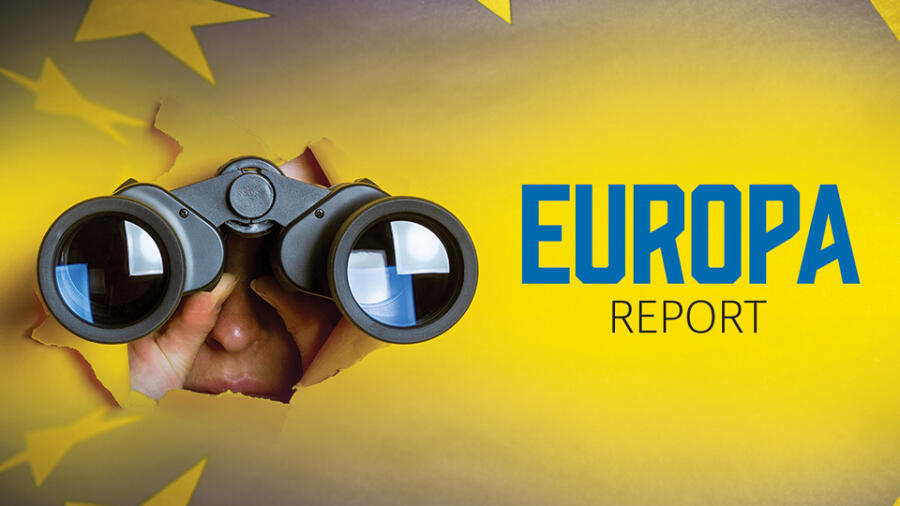As 2025 unfolds, the European pleasure industry finds itself balancing between resilience and recalibration. After riding high on customer demand during the pandemic, the sector is now adjusting to more cautious customer behavior, global geopolitical tensions and shifting retail strategies. Yet despite headwinds, industry leaders remain optimistic, driven by evolving values, steady innovation and a continued push toward the normalization of pleasure products.
Consumer tastes are shifting and markets are maturing, driving the European industry to embrace a wave of product innovation that spotlights high-end aesthetics, functionality and inclusive appeal. From the latest high-tech to luxe self-care products, brands are reimagining what modern sexual wellness looks like — and where it can go next.
Despite caution in the first half of the year, the overall tone across the European pleasure market is one of positivity.
Geneviève Larivière of OneUp Innovations has noticed a shift from impulse purchases to more deliberate, curated consumption.
“Over the past year, we’ve seen a move away from the post-pandemic novelty boom,” Larivière observes.
For Jens Wilhelmsen, CEO of Ohdoki, the past year has been clearly defined by what he calls a “flight to quality and technology.” European customers are choosing fewer but more high-end products — particularly those offering advanced features, smart tech and premium design.
“We believe the European customer’s appetite for high-end, innovative products will remain strong,” he predicts.
That appetite is fueled by a deeper societal shift. As La Clef des Charmes director Céline Menting explains, the European market is experiencing a long-overdue democratization of sexuality.
“Taboos have been falling,” she says. “This allows for a progressive acceptance of products and conversations around pleasure.”
Menting highlights several key areas of opportunity: inclusive design beyond binary and heteronormative frameworks, better user interface logic, less gendered packaging and stronger sustainability education.
“It is imperative to raise awareness among customers and throughout the reselling chain about the recycling and reconditioning of sex toys,” she says.
Brad Taylor, head of global sales at Creative Conceptions, offers an upbeat view of the current market climate.
“The European market has held steady over the last 12 months, but we have noticed a change in demand since Christmas and particularly Valentine’s Day this year,” he reveals. “March through June would typically be slower, but demand is up. We are optimistic.”
Pjur CEO Alexander Giebel also detects positive momentum, despite ongoing political instability and customs-related uncertainties, which he says have led to greater caution among wholesalers and retailers.
“Many are shifting to just-in-time inventory strategies and adopting a more conservative approach to stock planning,” Giebel observes. “But while ordering behavior has evolved, our partnerships have remained stable. There are clear signs of recovery within the intimacy and sexual wellness segment. Consumers are turning to products that support emotional connection, relaxation and balance. We launched new initiatives tied to our 30th anniversary to help energize retail, and they’re showing tangible results.”
Roxana Mendoza of XR Brands reinforces that growth remains strong overall.
“Online sales continue to rise, especially among younger audiences, thanks to discreet access and improved product education,” she notes.
For Orgie Company Export Manager Massimo Artioli, recent tightening of customers’ wallets is not enough to dim long-term optimism.
“Both retailers and customers have become more selective,” he acknowledges. “Every euro is calculated. But we believe the year will end on a positive note. If the political and economic situation stabilizes, confidence will return.”
Despite caution in the first half of the year, the overall tone across the European pleasure market is one of positivity. Consumers may be more intentional, but they are also more open.
What Europe Is Buying
Industry pros across Europe report increasing demand in several high-performing categories, from toys for men and couples to app-connected gadgets with extra features, intimate body-care products and fantasy-inspired designs.
Innovation in the pleasure space has attracted more male shoppers with advanced toys that connect to apps, move realistically and offer interactive features. Smart design is becoming a standard expectation for many customers.
Hot Octopuss co-founder Julia Margo finds that customers want control and options.
“Heating features, multiple sensations and connectivity are top of mind,” she says. “People want toys that can adjust to the moment. Toys that learn from your preferences or deliver a more personalized experience.”
Björn Radcke, head of sales and marketing at Orion Wholesale, highlights popular features for men’s toys include ergonomic designs that are easy to grip, high-speed motors and compact, discreet sizes.
“Wearables and app-controlled devices continue to rise in popularity,” confirms Amsterdam-based Kiiroo’s CEO, Toon Timmermans. “Interactive, teledildonic products are resonating with users looking for connection and hands-free experiences.”
Taylor notes that aesthetic design and playfulness have become more important as well, paving the way for brands like Creative Conceptions’ Unihorn, a line of unicorn-themed vibrators.
“We find that balance — a wellness product that doesn’t take itself too seriously — is very effective in Europe,” he concludes.
Meanwhile, increased emphasis on connection, intimacy and co-pleasure has reinvigorated interest in partner-based experiences. Kiiroo sister brand Luxus recently introduced its eponymously named two-piece couples’ device, which features LuxHim magnetic penis ring components and a LuxHer clitoral stimulator that detects LuxHim’s proximity and responds with vibration. LuxHer can also connect to the FeelConnect app, allowing remote control access and enabling users to customize settings, including vibrations, patterns, lights and more. Other couples toys gaining momentum include items like We-Vibe’s signature U-shaped vibe, cock rings and curated kits.
In addition to couples toys, Satisfyer CEO Sven Pelka says there is also a growing interest in accessible entry-level products, which lower the barrier for first-time buyers.
“By offering diverse products, we’re giving stores the tools they need to expand their customer base and keep people coming back for more,” he says.
European customers, Pelka adds, have particularly high expectations when it comes to design, storytelling and ethical production.
“Europeans value shopping experiences that feel refined and integrated into their lifestyles,” he explains. “They want products that look and feel premium — and they care deeply about sustainability and responsible sourcing.”
Indeed, sustainable packaging, reduced plastic use and biodegradable materials are becoming nonnegotiables for many EU retailers and customers, according to Timmermans.
“Both Luxus and Kiiroo are exploring innovations in this space, from recycled packaging materials to modular designs that extend product lifespans,” he says. “Green credentials are not just a ‘nice-to-have’ — they’re increasingly influencing B2B partnerships and customer purchasing decisions.”
Menting points to two other fast-rising trends. One is fantasy-inspired toys, which are captivating a new wave of customers interested in role-play and world-building.
“Our clients are drawn to unique shapes that evoke mythical creatures like dragons or krakens, fueled by a love for dark romance and imaginative play,” she says.
The other is the demand for gender-inclusive designs.
“There’s a strong desire for toys that transcend traditional gender labels, focusing purely on the sensation and function they offer to appeal to everyone, regardless of identity,” Menting notes. “It’s all about personalized exploration and radical inclusivity.”
Marta Brzezińska, co-founder of Poland-based online boutique Lula Pink, agrees. She reports a clear preference among Lula Pink customers for non-phallic designs.
“There’s a growing interest in wearable vibrators, pelvic trainers and crystal wands used for intentional, affirming touch,” she says. “It’s not just about sensation — it’s about how products help users connect with their bodies and identities.”
The rising demand for male pleasure devices, wearable tech and imaginative designs signals a maturing market with more diverse needs and expectations.
As Timmermans puts it, “Across categories, the preference is clear: Products that combine sophistication, quality materials and a sense of intentionality in both design and user experience are winning in Europe.”
Mapping the Momentum
As Europe’s pleasure industry matures and diversifies, brands are turning their attention to regional shifts in growth, cultural attitudes and retail infrastructure. While legacy markets like Germany, France and Scandinavia remain stable anchors, the biggest opportunities for expansion in 2025 are emerging from the south and east. From Spain to Poland, shifting norms and rising customer confidence are reshaping the landscape of sexual wellness.
"We still see great value in Scandinavia," says Radcke. "But France and Spain are also growing markets."
This perspective is echoed across the industry as brands increasingly balance core markets with new areas of promise.
“The German economy seems to be recovering, northern Europe is doing pretty well and we are seeing an unexpected growth rate in eastern Europe, despite the situation in Ukraine,” reports Paolo D. Griffo, key account manager at Danamedic.
While Griffo views the market in southern Europe as still in its early stages, other industry leaders have already observed rapid progress there. Larivière, for example, sees exciting momentum paving the way for expansion in both southern and eastern Europe.
“Countries like Spain, Poland and the Czech Republic are emerging as key growth territories, particularly for wellness-forward and inclusive brands,” she attests.
Tech-forward companies like Kiiroo are also watching these developments closely.
“Southern and eastern Europe are showing accelerated growth, particularly in the cam market,” says Timmermans. He notes that Spain and Romania are especially active, with cultural shifts happening most rapidly among Gen Z and millennials.
XR Brands’ Mendoza also sees southern Europe emerging as a key hotspot for market expansion in 2025.
“Countries such as Spain, Greece, Italy and Portugal are showing impressive momentum,” she notes, attributing this to a combination of increasing customer confidence, evolving cultural openness and tourism-driven demand.
For Wilhelmsen, the future lies east.
“While Germany remains the leader of the European market due to its progressive attitudes and economy, the most explosive growth is anticipated in eastern European markets,” he says. “We’re witnessing a shift in these regions, with increasing acceptance of pleasure products and a significant rise in customer purchasing power.”
The pattern of cultural change driving economic growth is particularly clear in Spain and Poland. As evidence, Artioli points to Orgie Company’s consistent year-over-year development.
“Both markets are becoming increasingly receptive to sexual wellness products, with a growing number of customers seeking quality, innovation and well-being in this category,” he affirms.
While the pace of change may differ from one region to another, European customers are more curious and open than ever before. The combination of cultural progress, digital accessibility and improved product design is making sexual wellness increasingly marketable across the continent.
What Sets European Shoppers Apart
In the evolving global pleasure market, regional nuances matter more than ever. While the North American and Asian-Pacific regions often set the tone for bold branding and tech-forward innovation, the European market is shaped by a different set of values.
“European customers tend to place a high value on design, discretion and product integrity,” says Timmermans. “While shoppers in other regions like North America may prioritize power, novelty or bold branding, European buyers are often drawn to refined aesthetics, thoughtful materials and sustainable design choices that align with their lifestyle and values.”
Discretion can be another important selling point in Europe.
“Polish shoppers, especially those living with partners or children, value quiet motors and simple controls,” explains Marta Brzezińska, Lula Pink co-founder. “Many seek toys they can use without fear of detection.”
Emmy Nicholson of Lovehoney Group adds an additional factor to the list of considerations guiding shoppers’ choices.
“Europeans also appreciate subtle branding and messaging that respects their privacy and values,” she says.
The in-store experience tends to be different for European customers as well.
“In the U.S., there’s often high turnover among retail staff, making it more difficult for brands to prioritize in-store education or maintain consistent messaging,” Timmermans explains. “By contrast, many European markets benefit from more stable employment structures, particularly in boutique and specialty retail. As a result, investing in staff training pays long-term dividends, and customers benefit from better-informed, more confident recommendations. This, in turn, strengthens brand trust.”
According to Timmermans, this dynamic allows brands to embed deeper messaging and product understanding at the point of sale — a major advantage in markets where education is a key component of the purchase journey.
“European shoppers are also more engaged with educational content and are proactive in researching how pleasure products can contribute to their overall wellness,” adds Timmermans. “They appreciate brands that take a warm, inclusive and intelligent approach to communication.”
All that being said, it is still important not to overgeneralize about the continent, contends Margo.
“The truth is, there isn’t one Europe,” she says. “Attitudes, preferences and cultural norms vary massively. Across the board, there’s often more openness around bodies and health, but sex and masturbation still carry some stigma. Brands need to be mindful and lead with education, promoting pleasure as part of self-care — but they should not assume everyone is entirely comfortable yet.”
It Comes With the Territory: Challenges and Concerns
Of course, as the market grows, so does the amount of competition — including from bargain e-tailers like Temu and Amazon. Some folks in the industry blame those platforms for driving down value and quality.
“The space is slowly becoming overcrowded with options,” Margo says. “More choice is great for customers, but it makes it harder for brands to stand out — especially with counterfeit and lookalike products muddying the waters.”
This further exacerbates the challenge of standing out.
“Inflation and cost-of-living pressures in parts of the EU require brands to demonstrate value beyond novelty,” notes Timmermans.
For Taylor, the key is thoughtful curation and clear differentiation.
“Firstly, we develop unique products with a real point of difference in the market and make sure that we strategically partner with companies that align with our vision of affordable product, with that added-value piece,” he offers.
Creative Conceptions’ dual role as both manufacturer and distributor in Europe allows it to stay agile, Taylor explains.
“When we work together on a brand for distribution, we always ensure that it offers something different to our customers,” he says. “Already this year, we have partnered exclusively in the U.K. market with Lovense, Satisfyer, Fun Factory and Honey Play Box, with more partnerships planned.”
Global economic pressures compound the problem even more. Griffo points to high inflation and supply chain volatility as key issues.
“People are focusing mostly on primary goods, and increased energy costs are leading to higher shipping fees and subsequent price wars,” he says. “We will soon be flooded by Chinese suppliers trying to offset their losses due to the trade war with the U.S.”
Meanwhile, regulatory inconsistencies across EU member states mean that packaging, language and compliance requirements can vary widely — especially for wellness products that straddle the line between health and intimacy.
The same variation is evident when it comes to getting the message out. Politics plays a role in shaping what brands can say, where they can sell and how their products are perceived.
“Populist governments tend to be more conservative toward everything related to sex and sexual wellness,” says Griffo. “But in general, we are still quite open about such topics here in Europe, except in some regions — for example, southern Italy.”
Nicholson notes that countries like Spain, Germany and the Netherlands are generally considered progressive, but other markets still face advertising restrictions, media hesitance or societal taboos.
“We address this through education-led marketing, local partnerships and campaigns that focus on wellness and empowerment rather than explicit content,” she says.
Despite these challenges, Brzezińska sees a clear sense of resolve among European brands and retailers.
“We see growing resilience and awareness among customers, who now actively seek safer, values-aligned spaces for exploring their sexuality,” Brzezińska observes.
Lula Pink, she affirms, wants to keep fanning that flame.
“We consider our presence not only commercial, but also cultural,” she adds. “A quiet but consistent form of resistance.”
Dual-Channel Retail Strategy
As regional preferences keep changing and diversifying, brands are focusing on flexibility, customer experience and building long-term relationships with European customers via both brick-and-mortar channels and ecommerce, which plays an even bigger part in the European pleasure sector than it does in the U.S.
Ecommerce continues to lead in overall volume and growth, Mendoza notes, especially among younger groups like Generation Z and millennials.
“These tech-savvy customers prioritize speed, convenience and digital integration, making online platforms their preferred shopping option,” she says.
That trend is especially noticeable in certain parts of the continent.
“Regions like Czechia and Poland are very advanced in terms of tech,” Taylor explains. “Combine that with a more reserved attitude toward sexuality in some communities, and you have a perfect recipe for an ecommerce sexual wellness business.”
Timmermans highlights western and northern Europe as areas where ecommerce is thriving.
“Kiiroo and Luxus cater to both channels through a hybrid strategy: direct-to-customer platforms with rich digital storytelling and live support, and curated partnerships with select European retailers who prioritize education and align with the brands,” he says.
Nevertheless, the in-store experience has not lost its appeal.
“Ecommerce is the undisputed king, a dominance cemented during the pandemic,” notes Wilhelmsen. “Yet while many customers seek the privacy and convenience of online shopping, a growing segment craves the personal connection and instant gratification of the in-store experience.”
Retailers, especially education-focused shops and boutiques offering an intimate setting, continue to be influential in building brand trust. Tactile connection with the product remains a key factor.
“Erotic products are highly sensory,” Giebel points out. “In-store, we provide testers and storytelling displays. Online, we work with partners to optimize conversion through content.”
Orion supports both channels with customized promotional materials, and also provides social media templates for retailers upon request. Lovehoney Group provides in-store demo kits, training and video content optimized for Google SafeSearch. Meanwhile, brands like OneUp Innovations stay flexible with their packaging, pricing and merchandising strategies.
“For ecommerce, we emphasize discreet packaging, rich digital assets and video content,” says Larivière. “For in-store retailers, we offer luxurious packaging that includes an educational sales description of the product, and customizable assortments to suit their local clientele.”
Creative Conceptions has gone even further to tailor offerings across sales formats.
“When we launched our bondage line, Sei-Mio, we wanted to cater to both,” recalls Taylor. “For stores, we made sampler boards where customers can touch each material. For online, we created a gallery of real-life couples using the products. Retailers using these images have seen their bondage category spike.”
This hybrid approach ensures that customers can engage with brands in the way that best suits their lifestyle.
“It’s not about picking one over the other,” explains Menting. “Think of it more like two good friends working together. Online offers privacy and convenience — especially important for those outside major urban areas. But our physical store is the heart of experience and human touch. We offer personalized advice, deep product knowledge, and the ability to touch and feel the products.”
Continental Prospects
From intimate furniture to wellness-focused formulas, premier pleasure brands are responding to shifting expectations with inventive launches that reflect customer demand and global logistics in the European market.
Pjur is preparing for a major reveal at eroFame Amsterdam, with a series of new products that will expand its premium intimacy range.
“These launches represent product types that are completely new to our portfolio,” says Giebel. “These additions are designed to meet evolving customer needs and open new possibilities for our retail partners.”
On the wellness side, Orgie is leaning into the demand for sexual self-care. Its latest launch, Hydra Intima, is a gynecologically tested vulvar moisturizer designed for daily use.
“Its first batch sold out in less than a week, confirming that we’re heading in the right direction,” Artioli notes. “We continue to see a growing demand for natural ingredients and products that support intimate well-being.”
Citing strong, steady growth across Europe and shoppers showing greater confidence and curiosity, Satisfyer is also looking ahead with grand ambitions, investing in monobrand stores.
“Our $750 million global retail and branding program includes $250 million dedicated to putting sexual wellness in the cultural spotlight, such as placements on TV shows like ‘Euphoria’ and ‘Emily in Paris,’ or films starring major celebrities,” Pelka says. “By increasing mainstream visibility, we’re making it easier for everyone to talk about, recommend and sell these products, opening doors for all retailers to benefit from a more accepting, enthusiastic customer base.”
Liberator is expanding its offerings with new textures and finishes, a nod to European sensibilities.
“We’ve added luxurious velvet and vegan leather fabrics to Liberator staples like the Wedge and Wedge/Ramp Combo, and we’re seeing incredible enthusiasm for the new Fascinator faux-fur throw, which has crossover appeal for gifting and home decor,” says Larivière. “We’re also refining our modular furniture offerings to better suit the European aesthetic: lightweight, elegant and versatile enough for both intimate and everyday use. These items are not only beautiful and functional, they’re designed with sustainability and ease of shipping in mind — two priorities that are essential in our conversations with European buyers.”
For more and more Europeans, sensual self-care and intimacy products are no longer perceived as a taboo niche, but as an integrated part of wellness routines and lifestyle choices. Whether through tactile exploration in boutique shops or private discovery via ecommerce, customers across Europe are increasingly confident in seeking pleasure that feels personal and purposeful. At the same time, challenges like inflation, regulatory ambiguity and platform censorship persist, requiring brands and retailers to stay agile and intentional.
As the European pleasure industry shifts to accommodate cultural norms, economic pressures and customer expectations, its next chapter will likely hinge on how well it can balance innovation with accessibility. If current trends continue, brands that focus on quality and satisfy diverse curiosities will not only survive but also lead in shaping the future of intimacy retail in Europe.









